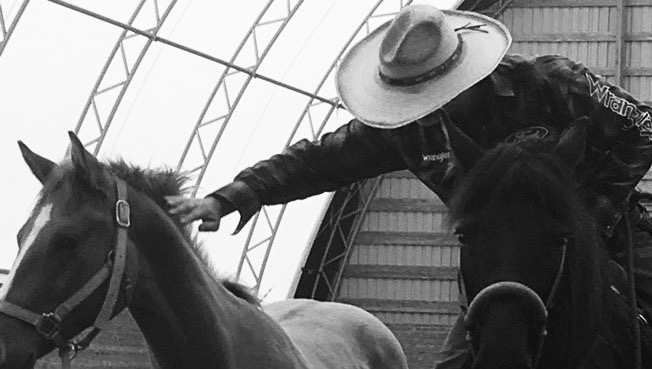The concept of “styles” of horsemanship is something I wrestled with for a long time. Here in Southwestern Ontario, when people talk about horsemanship styles, they’re usually referring broadly to either English or Western riding. But the truth is, around here at least, those two styles are practically the same—distinguished mostly by the saddle, the headgear, and the specific arena sport being pursued.
What I’ve come to understand is that true horsemanship has nothing to do with tack or discipline. It’s not defined by whether you ride dressage, run barrels, work cattle, or head out on a casual trail. Horsemanship is something deeper—something that transcends sport, breed, gear, or tradition.
It took me years to unravel what I was seeing at clinics, in videos, in books, and at events. But eventually, I came to this conclusion: there’s only one kind of horsemanship. And it applies everywhere. Whether you’re chasing cows, jumping fences, or simply riding for the joy of it—horsemanship is horsemanship.
Too often, people get caught up in completing tasks, winning ribbons, or even just socializing on a leisurely trail ride. In those moments, thoughts of true horsemanship are usually far from their minds.
But when I look at the work and words of true horsemen—Martin Black, Gustav Steinbrecht, Ray Hunt, Nuno Oliveira, Tom Dorrance, François Robichon de La Guérinière, Buck Brannaman, François Baucher, Bill Dorrance, William Cavendish, the Duke of Newcastle—I see a clear, common thread. On the surface, they may seem worlds apart, separated by time, geography, and riding disciplines. But when viewed through the lens of horsemanship, the connection between them becomes unmistakable.
Digging beneath the surface, it becomes clear that all of them were students of the horse. And that’s the key: horsemanship isn’t about style—it’s about learning from the horse. Not from mechanical instruction or rigid routines, but from the subtle lessons horses offer us, day after day—lessons about feel, timing, and balance. Not just our own, but theirs too.
As Martin Black has said many times, “Good horsemanship is good horsemanship.”
Now, when I read Nuno Oliveira, I hear echoes of Martin Black. And when I watch Martin work, I can almost see de La Guérinière smiling across four centuries, pleased that someone else has caught a glimpse of the same light—a truth that transcends time, style, and discipline.

